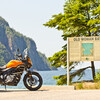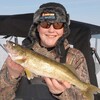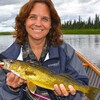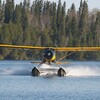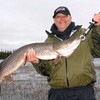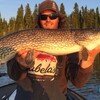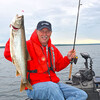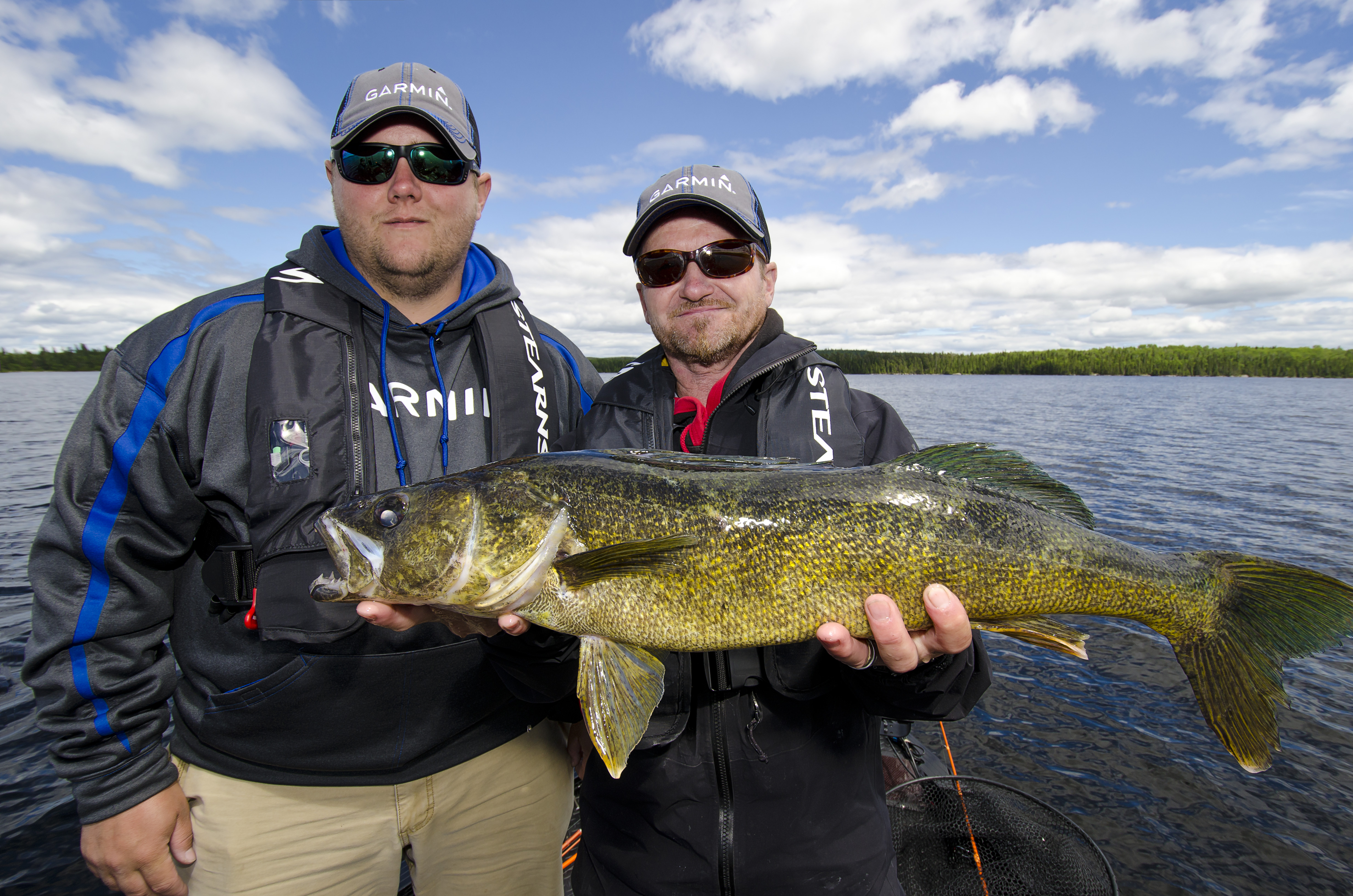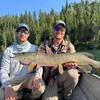
Understanding Pike and Muskie Leaders

Anyone who has encountered the northern pike or muskie has also encountered the dreaded “bite-off,” so common when these fish come unglued on a bucktail, jerkbait, jig or spoon. Combine a bone-jarring strike with a mouth full of dagger-like teeth, and it’s no wonder anglers everywhere have openings in their tackle box where their favourite lures used to be.
Not only do pike and muskie have a major case of overbite, but they can also bite through just about any fishing line short of steel wire. No doubt, this is why the commonly coated steel leader is considered standard equipment by many anglers who venture into Esox country. Wire leaders prevent bite-offs, but they can also prevent a lot of strikes from happening in the first place.

If not using a leader means fish lost to bite-offs and using a leader means no bites, what’s an angler to do? The answer depends a lot on the lure type and presentation involved. For certain pike and muskie fishing methods, a leader isn’t necessary, and for others, it’s almost mandatory. Understanding when to use leaders and what types work best with various lures and fishing presentations is the fast track to Esox fishing success.
When is a pike or muskie leader not necessary? The quick answer is that a leader isn’t necessary for most crankbait trolling situations. Usually, when trolling with crankbaits, pike and muskie are lip hooked. This happens in part because a fast-moving lure on a steady course is hard for a pike or muskie to fully engulf down its gullet. Most of these fish caught while trolling have the lure lodged firmly in their mouth, but not buried so deeply that the fish can shear off the line. Also, pike and muskie-sized crankbaits are more than a mouthful even for big fish. Simply trolling with larger lures will prevent 99% of bite-offs.
If big crankbaits help to reduce bite-offs, which lure group suffers most from the sharp teeth of these fish? The short answer this time is jigs. Jigs dressed in various soft plastics or with live minnows tend to get sucked right down the stovepipe, and bite-offs are common. When jig fishing, a bit-resistant leader of some sort is almost mandatory.
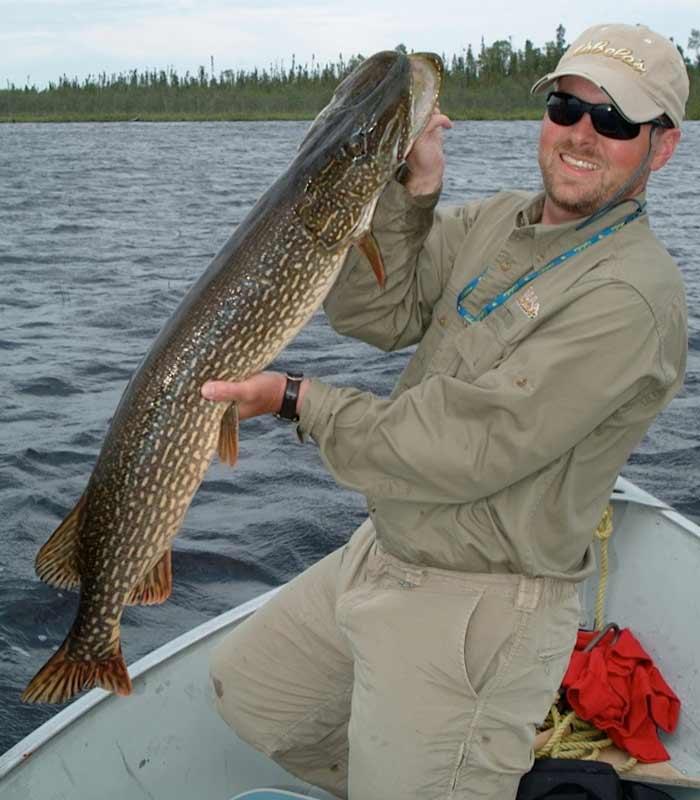
Other smaller lures, like in-line spinners and spoons, are also very susceptible to bite-offs. Fishing without a leader with any bait that’s small enough to easily fit inside a pike or muskie mouth is like playing Russian Roulette with all the cylinders loaded.
The type of retrieve used is also a factor in how many bite-offs are likely to occur. A hefty spinnerbait or magnum-sized bucktail spinner, cast and retrieved with a steady cranking motion, is fairly safe from the teeth of these predators. Other lures like jerkbaits or topwater plugs that are fished in a start-and-stop motion are sitting ducks, and almost certain to suffer from bite-offs if precautions aren’t taken.
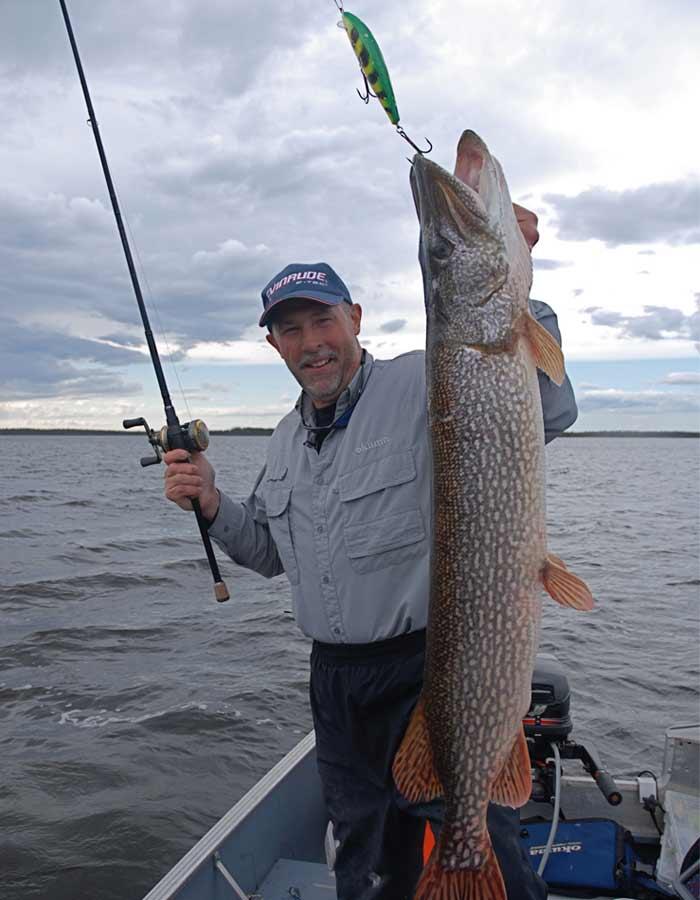
This beast caught and released by the author was taken on jerk bait. Special single-strand wire leaders designed for jerk bait fishing are produced by Bait Rigs Tackle one of the leading providers of pike and muskie fishing gear. (Photo credit: Mark Romanack)
Anglers will find a host of leaders designed to make pike and muskie fishing a happy affair. For fishing techniques where the risk of bite-offs is lower, fashioning an 18-inch long leader from 50- to 80-pound test fluorocarbon line is a good option. Fluorocarbon is flexible, holds knots well, and has enough abrasion resistance to turn back the teeth of pike and muskie in most situations. Tie a ball-bearing swivel on one end of this leader and a heavy-duty snap on the other end.
Presentations that require a little more bite-off protection require leaders made of titanium wire. Titanium wire is thinner than coated wire, and also resists kinking when a powerful fish is hooked. A number of manufacturers produce titanium wire leaders designed with toothy critters in mind.
For maximum in bite-off protection, anglers may want to consider heavier wire leaders known as “jerkbait leaders.” Normally, these are made of a much stiffer single-strand wire and are used for fishing jerkbaits to target monster muskie and trophy-class walleye. Bait Rigs Tackle produces not only these “jerkbait leaders” but a host of other high-quality leaders for pike and muskie fishing.
Summing In Up
The way to beat the teeth of pike and muskie is to match up the right leader with the right lures and presentations. Understanding the basics of leader technology can just about guarantee that when Mr. Big decides to bite, the experience will result in a thrill, not a disappointment.
Recommended Articles

The Group of Seven in Algoma

9 Facts to Know about the Agawa Canyon Tour Train


